Walter J. Curran
Artificial Intelligence in Tumor Subregion Analysis Based on Medical Imaging: A Review
Mar 25, 2021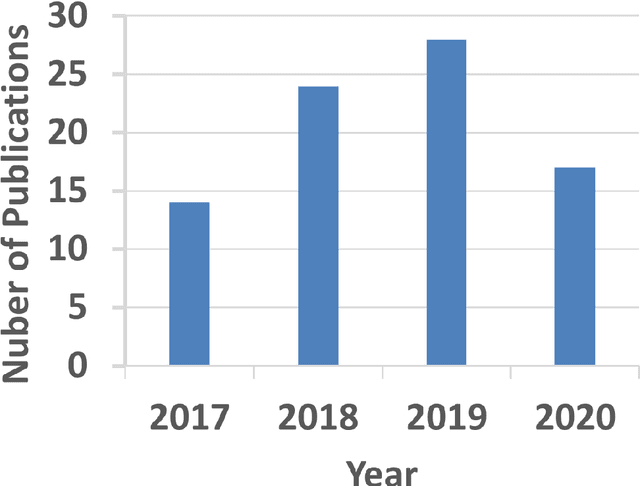
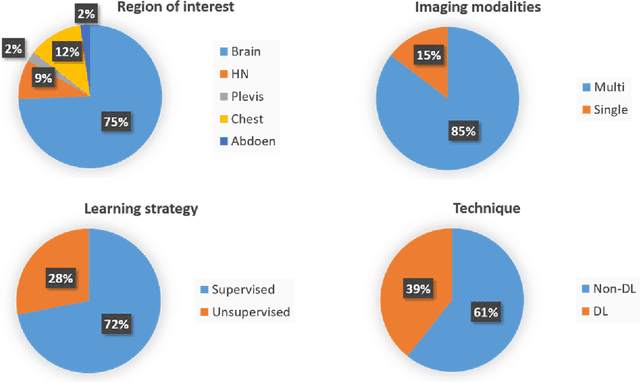

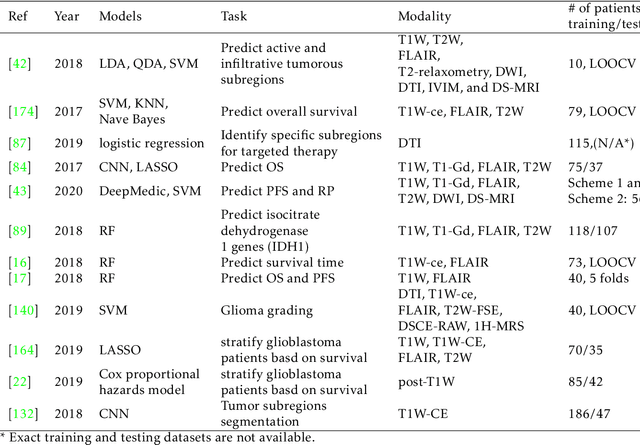
Abstract:Medical imaging is widely used in cancer diagnosis and treatment, and artificial intelligence (AI) has achieved tremendous success in various tasks of medical image analysis. This paper reviews AI-based tumor subregion analysis in medical imaging. We summarize the latest AI-based methods for tumor subregion analysis and their applications. Specifically, we categorize the AI-based methods by training strategy: supervised and unsupervised. A detailed review of each category is presented, highlighting important contributions and achievements. Specific challenges and potential AI applications in tumor subregion analysis are discussed.
Generative Adversarial Network for Image Synthesis
Dec 31, 2020


Abstract:This chapter reviews recent developments of generative adversarial networks (GAN)-based methods for medical and biomedical image synthesis tasks. These methods are classified into conditional GAN and Cycle-GAN according to the network architecture designs. For each category, a literature survey is given, which covers discussions of the network architecture designs, highlights important contributions and identifies specific challenges.
Deep Learning in Multi-organ Segmentation
Jan 28, 2020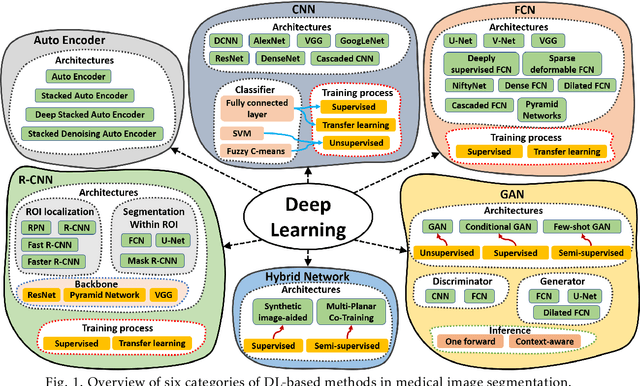
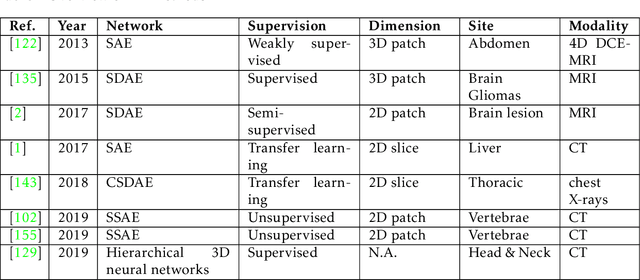
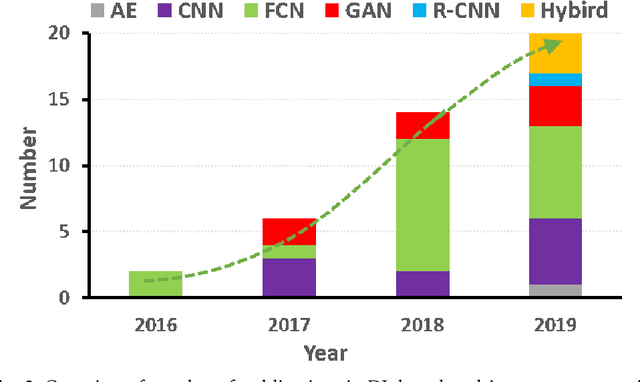

Abstract:This paper presents a review of deep learning (DL) in multi-organ segmentation. We summarized the latest DL-based methods for medical image segmentation and applications. These methods were classified into six categories according to their network design. For each category, we listed the surveyed works, highlighted important contributions and identified specific challenges. Following the detailed review of each category, we briefly discussed its achievements, shortcomings and future potentials. We provided a comprehensive comparison among DL-based methods for thoracic and head & neck multiorgan segmentation using benchmark datasets, including the 2017 AAPM Thoracic Auto-segmentation Challenge datasets and 2015 MICCAI Head Neck Auto-Segmentation Challenge datasets.
Machine Learning in Quantitative PET Imaging
Jan 18, 2020

Abstract:This paper reviewed the machine learning-based studies for quantitative positron emission tomography (PET). Specifically, we summarized the recent developments of machine learning-based methods in PET attenuation correction and low-count PET reconstruction by listing and comparing the proposed methods, study designs and reported performances of the current published studies with brief discussion on representative studies. The contributions and challenges among the reviewed studies were summarized and highlighted in the discussion part followed by.
Deep Learning in Medical Image Registration: A Review
Dec 27, 2019



Abstract:This paper presents a review of deep learning (DL) based medical image registration methods. We summarized the latest developments and applications of DL-based registration methods in the medical field. These methods were classified into seven categories according to their methods, functions and popularity. A detailed review of each category was presented, highlighting important contributions and identifying specific challenges. A short assessment was presented following the detailed review of each category to summarize its achievements and future potentials. We provided a comprehensive comparison among DL-based methods for lung and brain deformable registration using benchmark datasets. Lastly, we analyzed the statistics of all the cited works from various aspects, revealing the popularity and future trend of development in medical image registration using deep learning.
 Add to Chrome
Add to Chrome Add to Firefox
Add to Firefox Add to Edge
Add to Edge